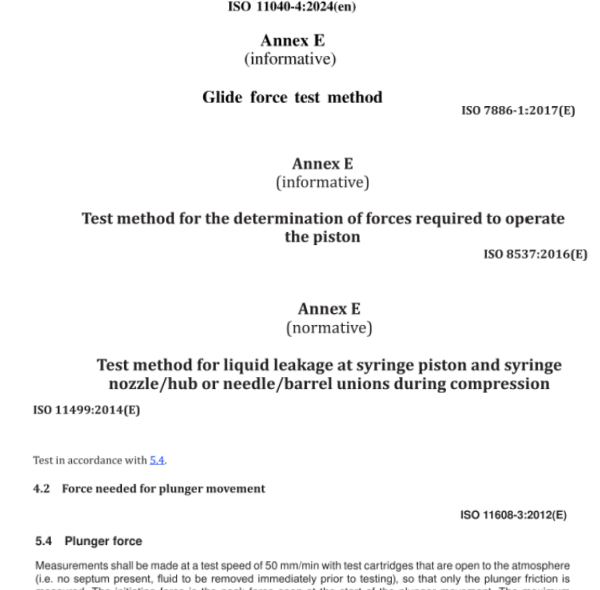Precision and consistency are critical in the manufacturing and quality control of medical syringes. Among the most essential mechanical performance tests is break loose and glide force testing, a method used to evaluate how smoothly a syringe plunger operates under controlled conditions. This test is vital for ensuring user safety, product reliability, and compliance with international standards such as ISO 11040-4, ISO 7886-1, ISO 8537, and ISO 11608-3.
In the medical and pharmaceutical industries, even slight variations in plunger movement can lead to dosing errors, user discomfort, or product failure. Break loose and glide force testing quantifies two specific forces during the movement of the syringe plunger:
The peak force required to initiate the plunger movement from a static position.
The consistent force needed to continue the plunger’s travel through the barrel.
These measurements are essential for evaluating the syringe plunger force and overall usability of both prefilled and manually operated syringes.
Break loose and glide force testing plays a critical role in evaluating the usability and safety of syringes, prefilled syringes, and pen injectors. The following internationally recognized standards provide specific guidelines and test methods to ensure consistency and reliability in performance assessment:
This standard outlines the procedures for determining the break loose and glide forces of glass barrel prefilled syringes, ensuring smooth plunger movement and patient comfort.
This standard applies to disposable hypodermic syringes for manual use, detailing the test method to measure the force required to initiate and maintain plunger movement.
Relevant to single-use syringes for insulin, this annex defines the glide force requirements for accurate and consistent insulin delivery.
This comprehensive standard provides performance requirements for single-use injector systems, including glide force characteristics to ensure safe drug administration.
Focused on needle-based injection systems (NISs), this part of the standard specifies methods for measuring break loose and glide forces in both reusable and disposable systems.

These standards guide manufacturers and testing laboratories in conducting accurate break loose and glide force evaluations, ultimately supporting product safety, regulatory compliance, and enhanced user experience.
To conduct accurate break loose and glide force testing, follow these procedures as outlined in international standards:
The test is performed using a precision force measurement system such as the Cell Instruments TSTM-01 Syringe Friction Force Tester. This equipment applies a controlled linear force to the plunger at a standardized speed (typically 100 mm/min as per ISO 7886-1 and ISO 8537), simulating manual or device-assisted injection.
Key measurements include:
As per ISO guidelines, a complete test report should include:
Understanding and controlling syringe plunger force directly relates to product performance, especially in autoinjectors, insulin pens, and sterile prefilled syringes. Excessive break loose force can cause jerky movements and inaccurate dosing, while high glide force may impact usability during continuous injection.
Consistent break loose and glide force testing allows manufacturers to:
Optimize silicone oil application in barrels
Verify compatibility between plunger stopper and barrel
Ensure ergonomic performance for end-users
Meet regulatory and customer specifications
Poor lubrication or mismatched components can significantly raise friction forces, leading to higher rejection rates or adverse user feedback.
At Syringetest.com, we bring together expertise, innovation, from precise engineering to personalized service to support our customers worldwide.

All rights reserved by Cell Instruments Co., Ltd. 2025